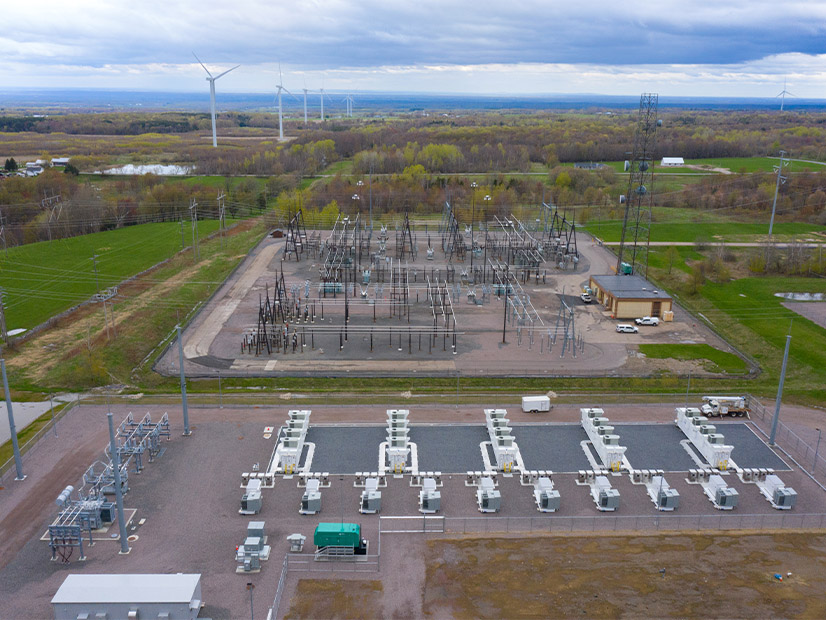
The New York Power Authority (NYPA) has compiled a 3.5-GW package of 40 potential projects as it moves into its new role as a renewable energy developer.
NYPA issued a draft of its first Renewables Strategic Plan at its Oct. 8 board of directors meeting. It lays out basic details of the 40 projects, 30 of which would be undertaken by private sector entities in partnership with NYPA, 10 by NYPA itself.
The plan also recaps changes the authority has made in the 18 months since being vested with increased responsibility in the state’s clean energy transition.
The 40 proposals entail solar and battery energy storage systems and span every corner of the state, though few would be placed in the densely populated New York City region.
The proposals are open to a 60-day public comment period, and their viability will be assessed through review of their economics, community impacts and real estate considerations before being added to the portfolio.
NYPA expects substantial attrition, however. The report did not quantify this, but a NYPA executive at the meeting said attrition is likely to be in the 80 to 85% range for early stage projects, which is in line with industry averages. More mature projects could see 30 to 60% attrition.
This was quite a letdown for advocates who had pressed long and hard for the state to take a more active role in renewable development.
The New York State Energy Research and Development Authority (NYSERDA) has extensive involvement in promoting and facilitating renewable development but does not itself undertake projects.
NYSERDA has achieved mixed results in a state where energy development has long been known to be expensive and slow. These chronic factors were joined with acute national and international financial factors that led to mass cancellations of renewable contracts in New York in the past year.
NYSERDA is attempting to pull off a turnaround but has a long way to go.
As a result, the state is on course to miss its goal of 70% renewables by 2030, possibly by a wide margin.
The Public Power NY coalition and other advocates had long sought to shift some of the emphasis in renewables away from the private sector and toward the public sector.
They succeeded during negotiations for the 2023/24 state budget, which included provisions authorizing and/or directing NYPA to develop renewables alone or in partnership, conduct workforce training for the renewables industry, set up a bill credit system for low- and middle-income utility ratepayers and shut down its fossil-burning peaker plants.
Public Power had been optimistic that NYPA could achieve results faster and at lower cost than the private sector, given NYPA’s access to low-cost capital and its independence from investors demanding return on their capital.
“NYPA has had over a year to plan for these contingencies, and should have planned to build enough capacity to account for attrition,” Public Power said in a prepared statement. “By only proposing 3.5 gigawatts, NYPA is setting the stage to fail to meet their own inadequate targets.”
The coalition said: “The Renewables Strategic Plan is an abrogation of NYPA’s responsibility to ensure that the state reaches 100% renewables by 2040, and their duty to New Yorkers to build a better future for future generations.”
‘All Hands on Deck’
Asked for comment, NYPA did not directly address the suggestion that the fate of the energy transition depends on its actions, but said it was proceeding with due diligence.
The Strategic Plan does lay out actions NYPA has undertaken in the past 18 months — created a new business unit, recruited personnel to run it, made regulatory filings, formed a subsidiary, issued a $100 million bond, and sought partners and proposals.
The document indicates the 40 projects are only the initial tranche; the plan must be updated every other year, and NYPA plans to develop as much renewable capacity as its funds allow.
This expanded role for NYPA was not supported by the energy industry. The Alliance for Clean Energy New York, for example, said it would place NYPA in unfair competition with the private sector. ACE NY pressed instead for NYPA to concentrate on developing transmission, a chokepoint in renewables development.
(NYPA, the nation’s largest state public power organization, operates more than 1,550 circuit-miles of transmission lines.)
ACE NY Executive Director Marguerite Wells said via email that the draft plan was comprehensive and could move the state closer to its clean energy goals and that partnering with private developers where possible is the right move for NYPA.
She added: “We don’t want to create scenarios where NYPA is competing with private developers on new projects, but we know there is going to be enough demand in the coming years and decades [and] we will need all hands on deck, and all ideas on how to build renewables faster are welcome.”
NYPA would not say what percentage of the 40 projects are new and how many are reboots of projects that previously held contracts issued by NYSERDA.
NYPA said project costs were not known at this early stage and estimates would not be made public. It also could not say which projects would support Renewable Energy Access and Community Help, the mechanism by which it will assist lower-income ratepayers, because that program still is in development.
The 10 self-developed projects NYPA is proposing would all be solar arrays. They would total 203.9 MW and be completed from late 2027 to late 2028.
More than 170 entities responded to NYPA’s request for information to identify parties interested in collaborating with NYPA. So far, NYPA has qualified 84 developers and investors and has negotiated with several of them.
Nine entities are listed as co-developers with NYPA on the 30 projects: Acquest Development, Boralex, ConnectGen/Repsol, CS Energy, Forward Power, NextEra Energy Resources, Oriden, Teaches Energy and YSG Solar.



